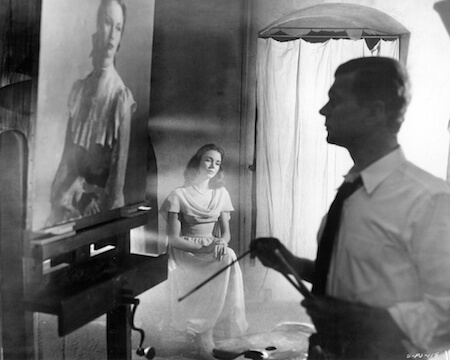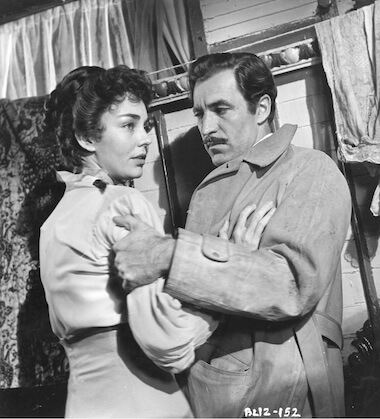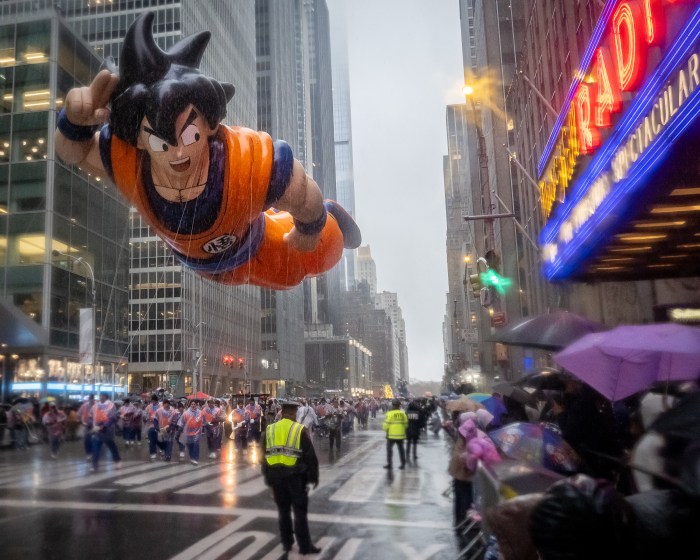Lee Yi-kyung in Lee Song-he-il’s “White Knight,” which screens August 10 at 4 p.m. | MUSEUM OF MODERN ART
BY STEVE ERICKSON| In most respects, the South Korean film industry is a success story. Thanks to a quota system, it’s one of the few national cinemas that’s managed to resist Hollywood and hang on to the majority of its own market. As of April, six of this year’s top 10 highest-grossing films in South Korea were made there.
If American cinema hasn’t stolen the hearts of Korean moviegoers, however, it’s poached some of the industry’s top directors. Kim Jee-woon and Park Chan-wook’s Hollywood debuts were released earlier this year, with Bong Joon-ho’s “Snowpiercer” to follow. I haven’t seen Kim’s Schwarzenegger vehicle “The Last Stand,” but Park’s “Stoker” was the kind of fascinating misfire that suggested the director learned about American life solely from watching Alfred Hitchcock’s “Shadow of a Doubt,” David Lynch’s “Blue Velvet,” and Tim Burton’s “Edward Scissorhands.”
MoMA hosts weeklong look at directors nurtured by a vital scene back home
Two of South Korea’s most prolific and prominent directors, Kim Ki-duk and Hong Sang-soo, seem unlikely to come to America (although Hong has made a film in France.) Kim’s “Pieta” won the top prize at the Venice Film Festival last year, which pissed off Cinema Scope magazine so much it ran 11 negative reviews of the film on its website. At the time, I thought it was an unfair dogpile, but after seeing “Pieta,” I understood why this amateurishly directed, rape-obsessed film drew such anger.
Hong continues to make strong work (including two films so far this year), but he remains commercially marginal. Last year, three of his films opened in New York, and all closed in a week.
A series like MOMA’s “Focus on South Korea” is helpful for giving us an opportunity to see the nation’s directors who haven’t yet become festival darlings or attracted American distribution but might get there one day.
Kim Su-hyun and Kim Joo-young in Jang Kun-jae’s “Sleepless Night,” which screens August 10 at 7:30 p.m. and August 11 at 2 p.m. | MUSEUM OF MODERN ART
If the great Japanese director Yasujiro Ozu were still alive, he might be making films like Jang Kun-jae’s “Sleepless Night” (Aug. 10, 7:30 p.m.; Aug. 11, 2 p.m.). Jang’s film is deceptively simple, but packs a powerful punch. A married couple (Kim Su-hyun and Kim Joo-young) go through their daily routines, contemplate parenthood, and argue about whether he tried to get one of their friends drunk. There’s little overt action, apart from a scene where she discovers that her bike has been stolen. However, Jang’s style brings a documentary-like authenticity to the film. He rarely moves the camera, which is positioned at a variety of angles. The scenes are often cut in surprising places.
The Ozu connection comes from Jang’s plainspoken style, the prominence food plays in his images, and his fascination with everyday life. Behind it all is the social pressure to become parents. It’s no surprise to learn that the film is autobiographical; it was even shot in the director’s own apartment. To the attentive viewer, “Sleepless Night” offers plenty of drama, even if it stays close to the minimalism of Asian “festival cinema.”
Lee Songhe-il’s “White Night” (Aug. 10, 4 p.m.) isn’t exactly a revenge fantasy, but MOMA’s program notes make it sound like one. After a gay-bashing that traumatizes him so much he leaves Korea for two years, flight attendant Won-gyu (Won Tae-hee) returns to Seoul for a night. He hooks up with Tae-joon (Lee Yi-kyung), a motorbike courier in a James Dean-style red jacket, and spends the night wandering around with him. The cinematography is bright, despite the nighttime setting, and the colors saturated. However, the film feels coy where it tries to be enigmatic and mysterious.
Won-gyu’s nocturnal excursion recalls Jon Shear’s now-forgotten US gay indie “Urbania,” but Lee keeps his cast down to two characters and centers on a protagonist who’s mostly silent and frankly comes off as a bit of a jerk. He’s the kind of man who won’t reveal his name to his date. The way the characters’ emotional interactions run the gamut from love to hate and back again feels contrived; they might benefit from having other people as sounding boards. Still, “White Night” reveals something about the essential isolation of Korea’s gay community, even in the age of cell phone hook-ups, and the mental and physical scars of hate crimes.
Park Won-sang in Chung Ji-young’s “National Security,” which screens August 5 and 7 at 7 p.m., August 6, 8, and 9 at 4 p.m., and August 10 at 1:30 p.m. | MUSEUM OF MODERN ART
Chung Ji-young’s “National Security,” which MOMA is honoring with a week-long run (Aug. 5 & 7, 7 p.m.; Aug. 6, 8 & 9, 4 p.m.; Aug. 10, 1:30 p.m.), does for torture what one-dimensional anti-drug films like “Christiane F.” and “Requiem For a Dream” did for heroin. It’s undeniably powerful, but so bleak and heavy-handed that it’s almost unwatchable. It should be required watching for anyone who thinks torture is politically useful and ethically justifiable, but the rest of us can safely skip it. If you already think torture is bad, it has no new insights. (Perhaps “Azooma” (Aug. 9, 7 p.m.) director Lee Ji-seung should catch it, judging from the dental torture that closes his ugly revenge drama.)
Based on an autobiographical essay by student activist-turned-politician Kim Geun-tae, “National Security” tells the story of a brutal 22-day stretch in jail suffered by a young man (Park Won-sang.) He experiences a wide variety of torture methods, although his captors try not to leave marks. The ‘Scope frame is usually filled with close-ups or medium shots, and the sets are claustrophobic. The cinematography is bleached of bright colors. Everything seems designed to be as blunt as possible, but that doesn’t prevent the film from occasionally slipping into tasteless sadomasochistic fantasy, as in a scene where Kim is treated like a dog.
“National Security” takes place in 1985, a few years before South Korea became a democracy, and for Koreans, this reminder of their country’s brutal past may be cathartic. Torture has become a part of American history, but the film’s context is too specific to really speak to our country’s experiences in Abu Ghraib and Guantanamo Bay. The 1999 Argentine film “Garage Olimpo” is a much better model for making a film about torture that brings home its horror without feeling like a pointless wallow in misery.
FOCUS ON SOUTH KOREA | All films in Korean with English subtitles | Museum of Modern Art, 11 W. 53rd St. | Aug. 5-11 | moma.org











